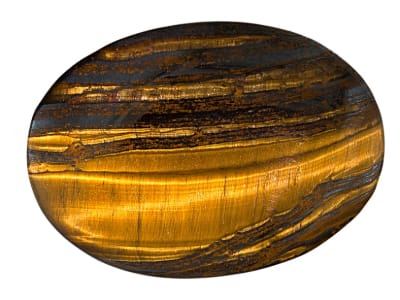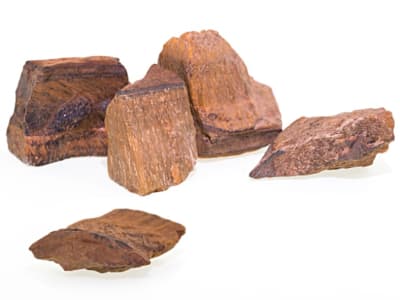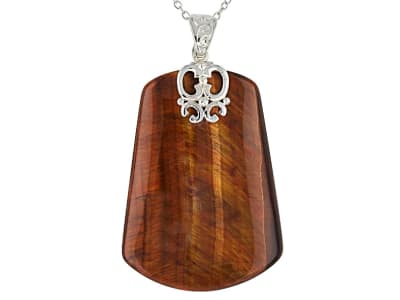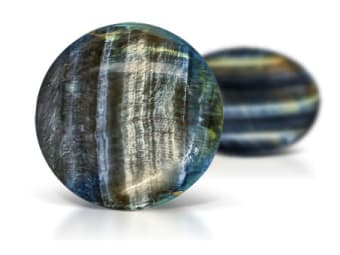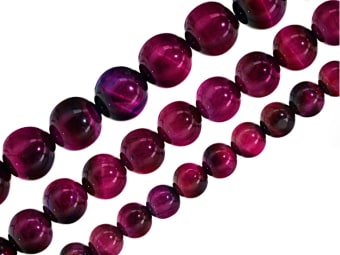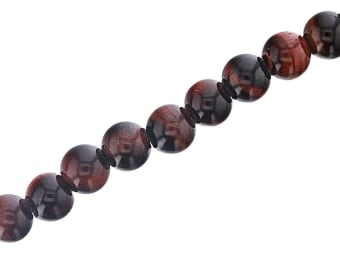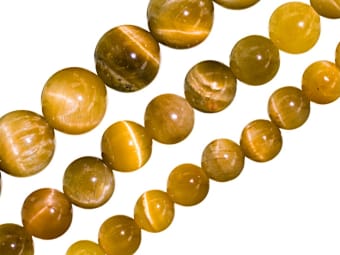Tiger’s-eye is a chatoyant member of quartz used for both decorative and ornamental purposes throughout history. Chatoyancy manifests as a silky, wavy shimmer across the stone. Tigers eye quartz is made up of quartz with intergrown fibers of amphibole that were altered to golden or rusty-brown limonite. Hawks eye quartz the grayish blue variety of tiger’s-eye and its color is due to the presence of crocidolite fibers.
General Information
Tolerance:very constant
LWUV: Inert
Tiger's Eye Colors
-
 Bi-color
Bi-color -
 Black
Black -
 Blue
Blue -
 Brown
Brown -
 Brown
Brown -
 Gray
Gray -
 Green
Green -
 Multi-color
Multi-color -
 Orange
Orange -
 Pink
Pink -
 Purple
Purple -
 Red
Red -
 Yellow
Yellow
Alternate Names
Hawk-Eye, Falcon's-Eye, Zebra Tiger's-Eye, Cat's-Eye
Countries of Origin
Tanzania, United Republic Of; United States of America; Ukraine; Madagascar; Zambia; Kenya; Thailand; United Kingdom of Great Britain and Northern Ireland; India; Unknown; China; Namibia; Brazil; South Africa; Australia; Indonesia
History
It's hard to be truly unique when you come from a large family. Tiger's-eye quartz pulls it off. First, it's a rich, golden yellow that's sometimes deep enough to be called bronze. Second, it has an optical property known as chatoyancy. Tiger's eye has intergrown fibers that, when hit with light, reflect a wavy, silky, shimmer that almost seems to flow across the gem. The eye of the tiger. Spectacular.
Care
Normal care for untreated stones. Avoid sudden temperature changes, chemicals, steam and ultrasonic cleaners for dyed stones.
More About Tiger's Eye
Quartz, in one form or another, is present in most rock formations. Gem-quality quartz is another matter. Although a stone that is often found in large crystals, gem-quality stones aren't found everywhere. Add a phenomenon like chatoyancy, and the stone becomes even rarer. Tiger's-eye quartz is often found in masculine jewelry, but not exclusively. It's a stone with universal appeal.
Species/Variety
Hawk's-Eye Quartz
Hawk’s eye quartz is grayish blue in color due to the presence of crocidolite fibers intergrown with quartz producing a wavy, chatoyant shimmer. The word chatoyant comes from the French word chatoyer, meaning to shine like a cat's eyes. When the fibers of crocidolite oxidize (a form of alteration due to contact with air), they turn golden brown, producing the related quartz variety, tiger’s eye.
Enhancement
Dyed Tiger's-Eye
Tiger’s-eye is brownish yellow or brown in its natural state. The material can be dyed any color. When you see an unnatural color, it is safe to assume that the stone has been dyed.
Red Tiger's-Eye
Reddish brown tiger’s-eye is produced by heat treating.
Bleached Tiger's-Eye
Tiger’s-Eye can be treated with hydrochloric or oxalic acid to bleach the material to create a pale translucent yellow color. When cut it as a cabochon it can simulate cat’s-eye chrysoberyl.
